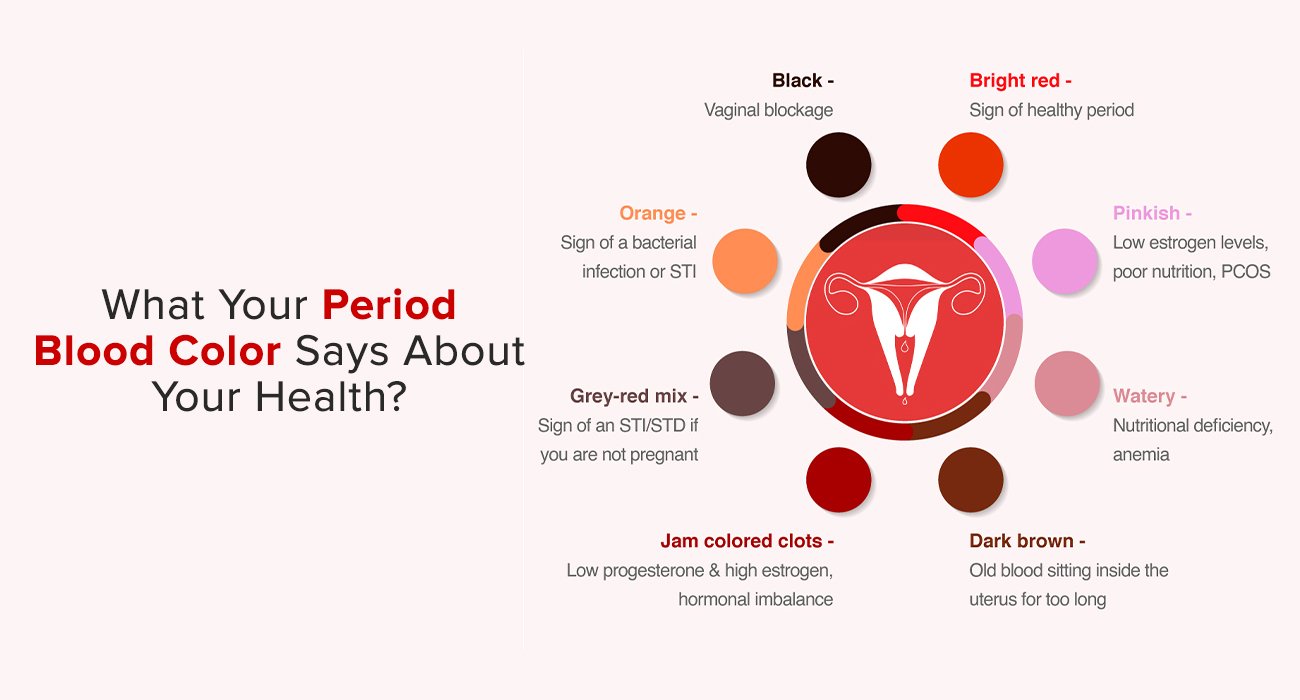You’re in the middle of your cycle, glance down, and notice your period blood looks…different. Dark brown, bright red, maybe even pink or orange. Immediately, you wonder: Is it normal? You’re not alone—many people ask this exact question. The truth is, your period blood color can tell you a lot about your menstrual health, and in most cases, changes are perfectly normal. But sometimes, they’re worth a closer look. Let’s break it down together—no stress, just facts.
What Does Period Blood Color Mean?
The color of your period blood can vary throughout your cycle and across different months. Factors like flow, hormones, age, and even stress can cause changes. Understanding what period blood color means can give you insight into your period health without jumping to conclusions.
Normal Period Blood Color: What to Expect
A healthy menstrual cycle can show a range of colors, from bright red to dark brown, and even pink. Here’s a quick overview:
- Bright red: Fresh blood, usually early in your cycle
- Dark brown: Older blood, often seen at the beginning or end of your period
- Pink: Lighter flow or hormonal changes
- Black or gray: Less common—sometimes worth checking with a doctor
Let’s explore each shade and what it could mean.
Bright Red Period Blood: What It Signifies
The bright red period blood significance often points to an active flow. It typically shows up at the start of your period when the blood is fresh and moving quickly. This is usually considered a normal period blood color, especially in younger individuals or those with a regular, moderate-to-heavy flow.

Dark Brown Period Blood: Causes and Meaning
Dark brown period blood often appears at the beginning or end of your period. Why? It’s older blood that has had more time to oxidize. This is common and usually harmless, but if it comes with a strong odor or unusual discharge, it might be time to check in with your doctor.

Pink Period Blood During Menstruation
Pink period blood during menstruation may occur when period blood mixes with cervical fluid. This can happen due to light flow, ovulation spotting, or hormonal fluctuations—especially low estrogen levels. If your flow is consistently pink and very light, it could signal a hormonal imbalance.

Black Period Blood: Should You Worry?
Black period blood health implications can feel alarming, but in many cases, it’s simply blood that took longer to exit the uterus. It’s common at the beginning or end of a cycle. However, if it’s accompanied by a foul odor or discomfort, seek medical advice.

Orange Period Blood and Infections
Orange period blood may occur when blood mixes with cervical mucus, but it can also be a sign of infection, such as bacterial vaginosis or an STI. Pay attention to other symptoms like itching, irritation, or unusual odor.

Gray Period Blood Concerns
Gray period blood is uncommon and can be a red flag. It’s often associated with infections or miscarriage (if you’re pregnant). If you notice gray discharge or blood, especially with a strong odor or fever, contact your healthcare provider right away.

Period Blood Color Changes and What They Mean for Your Health
Color changes are often linked to:
- Hormone shifts
- Flow speed
- Birth control
- Age
- Pregnancy status
Most of the time, it’s nothing to worry about. But some colors can be linked to deeper period health issues, especially when paired with other symptoms.
When to Worry About Period Blood Color
Here’s when to consider seeking medical advice:
- Gray or foul-smelling blood
- Sudden and extreme color changes
- Consistently light or pink periods
- Accompanied by pain, fever, or discomfort
If something feels off, trust your gut. Knowing when to worry about period blood color can help you stay proactive about your menstrual health.
Menstrual Blood Color Chart (Quick Guide)
| Color | Possible Meaning |
|---|---|
| Bright Red | Fresh, healthy flow |
| Dark Brown | Old blood, normal at start or end of period |
| Pink | Hormonal shifts, light flow |
| Black | Oxidized blood, could be normal or infection-related |
| Orange | Possibly mixed with mucus or infection warning |
| Gray | Infection or miscarriage—consult a doctor |
Final Thoughts
Your period is like a monthly check-in with your body. Understanding the period blood meaning behind each color can help you stay informed and confident in your menstrual hygiene journey. Most of the time, color changes are nothing to stress about—but when in doubt, talk to your doctor. Knowledge is power, and your cycle deserves attention, not fear.

